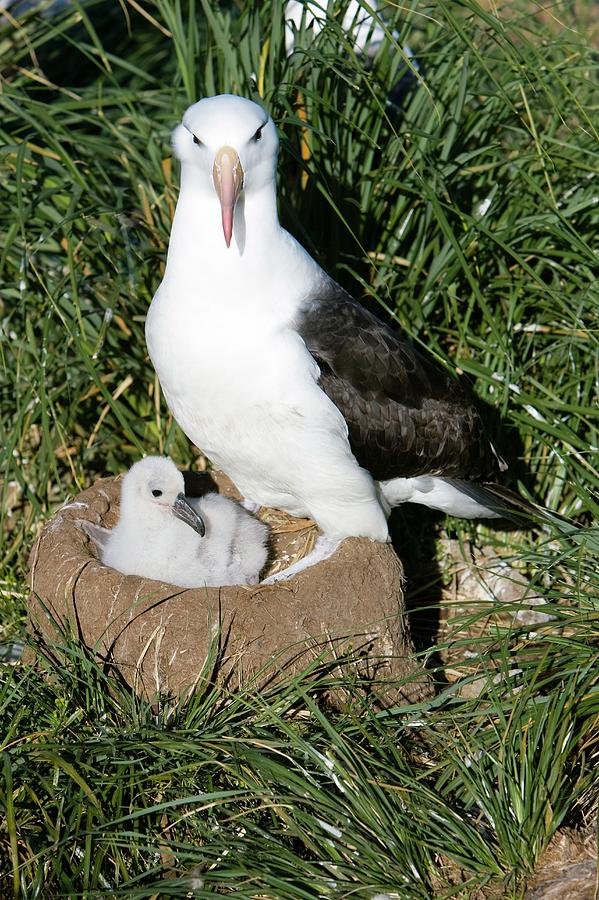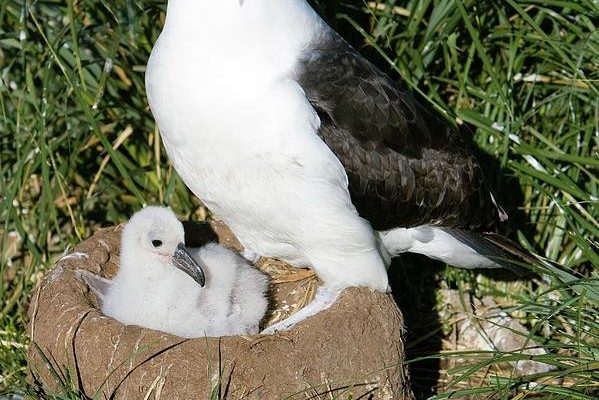
When albatrosses have chicks, they’re not just trying to keep them alive; they’re setting them up for a life of flying across vast ocean expanses. Much like a parent teaching their child to ride a bike, albatross parents guide their young through the early stages of life until they can take off on their own. So, how exactly do these birds go about raising their young? Let’s dive into the world of albatrosses and uncover their secrets.
Choosing a Nesting Site
Albatrosses are picky about where they build their nests. They usually nest on remote islands, away from predators and human interference. These locations are often on steep cliffs or flat areas near the edge of the land, which makes it tricky for land-based predators to reach them. Here’s why this matters: if the nest is safe, the parents can focus on what really counts—raising their young.
The nesting sites are often chosen during the courtship phase, which can last several years! Albatrosses are monogamous, meaning they partner for life. Once they find a suitable spot, they both work together to prepare the nest. They usually make it out of grass, soil, and feathers, creating a cozy little home for their future chick. Think of it like setting up a nursery for a baby—everything needs to be just right.
The Breeding Cycle
Albatrosses have one of the longest breeding cycles in the bird world. After choosing their nesting site, they typically lay one egg every two years. This long interval might sound odd, but it makes sense when you think about the effort involved. Raising a chick is time-consuming and requires a ton of energy—one egg is all they can manage at a time.
Once the egg is laid, both parents take turns incubating it, which lasts about 11 to 13 weeks. They don’t just sit on the egg; they also protect it from the elements and predators. Here’s the thing: while one parent is on the nest, the other is out at sea, hunting for food to bring back to the incubating mate. This teamwork is crucial to keeping the egg safe and ensuring that when it hatches, the chick will have enough food.
The First Days of Life
When the chick finally hatches, it’s a tiny ball of fluff—completely dependent on its parents for survival. Albatross chicks are fed a special diet of regurgitated food, which is a mix of fish and squid. It might sound unappetizing, but this puree is packed with nutrients essential for growth.
In the first few days, the parents are extremely protective. They’ll stand guard, warning off any potential threats, and take turns feeding the chick. It’s like a synchronized dance, where timing and teamwork are essential. As the chick grows, it starts to make its own sounds, communicating with its parents and even practicing its wing flaps. Imagine a toddler flapping their arms, pretending to fly—it’s all part of the learning process.
Learning to Fly
After several months, the chick reaches the stage where it’s almost ready to take its first flight. This period is critical because it’s when the parents teach their young about the vast world beyond the nest. They encourage the chick to stretch its wings and hop around the nest, building muscle and confidence.
Once the chick is about five to six months old, it’s time for the big leap. Albatrosses have a unique way of learning to fly, often waiting for a good wind to help lift them into the air. In this moment, the bond between parent and chick is evident as they guide and support during this challenging transition. Just like a parent cheering on their kid at a school play, the adult albatrosses are rooting for their young, encouraging them to take off into the sky.
Post-Fledging Support
After fledging, the young albatross is not fully independent. For several months, it stays near the nesting area, honing its flying skills and learning how to forage for food on its own. Here’s the interesting part: during this time, the parents continue to support their young by visiting and sometimes even feeding them.
This ongoing relationship is crucial because it helps the chick gain confidence. It’s common for young albatrosses to take a few trial flights before they master the art of gliding over the ocean for long distances. Parents provide both emotional and physical support, much like a parent guiding their child through the transitions of growing up.
The Challenges of Raising Albatross Chicks
Raising albatross chicks isn’t all sunshine and rainbows. These birds face several challenges, including environmental threats and human activities. Climate change has altered ocean habitats, impacting food availability. Pollution can also affect their food sources.
Additionally, introduced predators such as rats and cats on nesting islands can pose a significant threat to eggs and chicks. Conservation efforts are underway to address these challenges, but it’s a delicate balance. Albatrosses need a healthy ocean to thrive, and caring for the environment is essential for the future of these incredible birds.
Why Albatross Parenting Matters
Understanding how albatrosses raise their young gives us insight into the complexities of nature. Their parenting style reflects broader themes of teamwork, perseverance, and the bond between parents and their chicks. By learning about these remarkable birds, we can appreciate the importance of conservation efforts and the need to protect their habitats.
So, the next time you think about albatrosses, picture the dedication and care these birds put into raising their young. From choosing the perfect nesting site to teaching their chicks how to navigate the sky, albatross parenting is a fascinating journey worth celebrating.
In a world where every species plays a role in the ecosystem, albatrosses remind us of the beauty of life’s cycles and the importance of nurturing the next generation. By supporting conservation efforts, we can help ensure that future generations of albatrosses continue to soar over our oceans.

